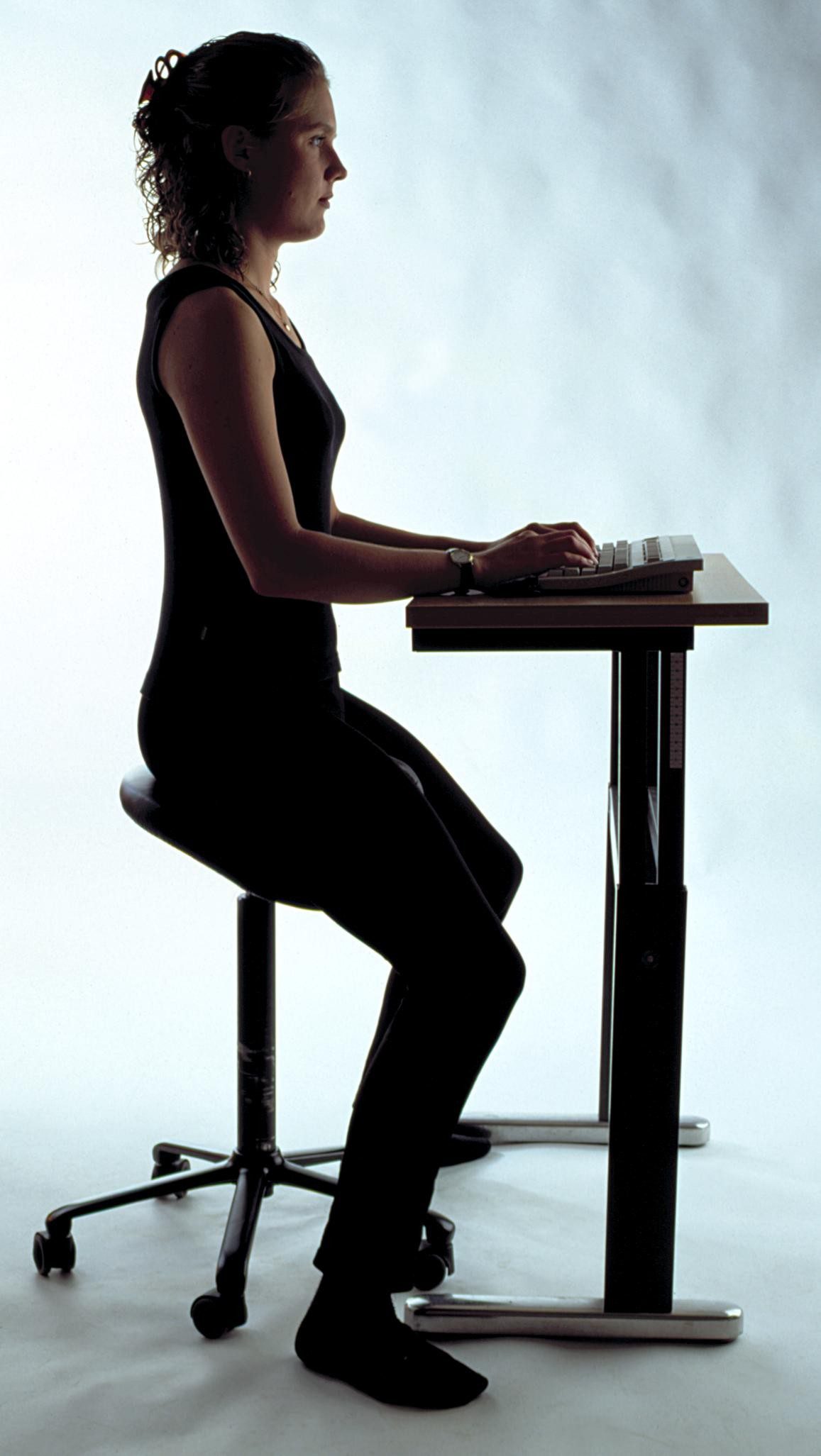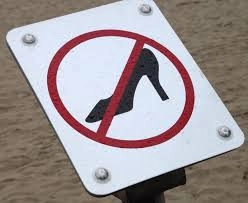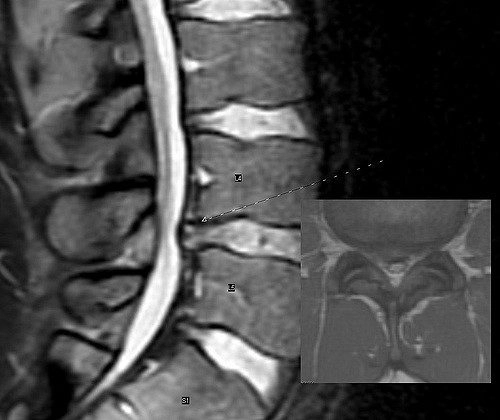9 Secrets to Heal Herniated and Bulging Disc Naturally

Low back pain. If you have it, you really want to find out how you can get rid of it now! Today! We can certainly understand why.
Low back pain is the #2 reason people go to the emergency room and the #1 reason for filing disability claims. Let’s face it, no matter what the root cause, whether a diffused disc bulge or sciatica, back pain hurts. It interrupts your life, and it’s easy to become frustrated when it seems like you can’t do anything because your back hurts.
Why Is This Happening to Me?
While chronic back pain is usually age-related, it can happen to almost anyone at every age. Common causes of back pain include:
- Spinal Stenosis
- Arthritis
- Degenerative Disc Disease
- Bulging or Herniated Disc(s)
Perhaps one of the most common sources for low back pain comes from a herniated or bulging disc. Disc problems cause excruciating pain for most people, with pain so intense that they go immediately to the emergency room.
A herniated disc can even cause sciatica pain. When a bulging or herniated disc puts pressure or touches the sciatic nerve, many people feel intense pain that radiates from the lower back, down the buttocks, and then down the back of the leg, sometimes all the way to the foot.
The Difference Between a Herniated Disc and a Bulging Disc
While you might hear people refer to a “slipped disc”, this is not an accurate term since a disc cannot actually slip out of place. When most people talk about a slipped disc, they are referring to a herniated disc. Sometimes this is also called a ruptured disc.
Between the bones of the vertebrae of the spine are small cushions that are filled with a jelly-like substance. These cushions prevent bones from rubbing against one another and act like miniature shock absorbers.
As we age, these cushions become harder and less flexible. When too much pressure is put on the spine, these discs can bulge out from between the vertebrae, touching a nerve. The nerve reacts by sending pain signals to the brain. This is called a bulging disc.
If the pressure remains intense or if the bulging disc is damaged enough times, the outer layer of the disc can split, allowing some of the softer inside material to squeeze out. This also touches on a nerve and causes intense pain. When this happens, it is called a herniated disc. A full explanation is discussed here.
As you can imagine, a herniated disc usually causes much more intense pain since it is usually larger in scale and can have more of an impact on the nerve root.
So How Can I Get Rid of Disc Pain and Disc Problems?
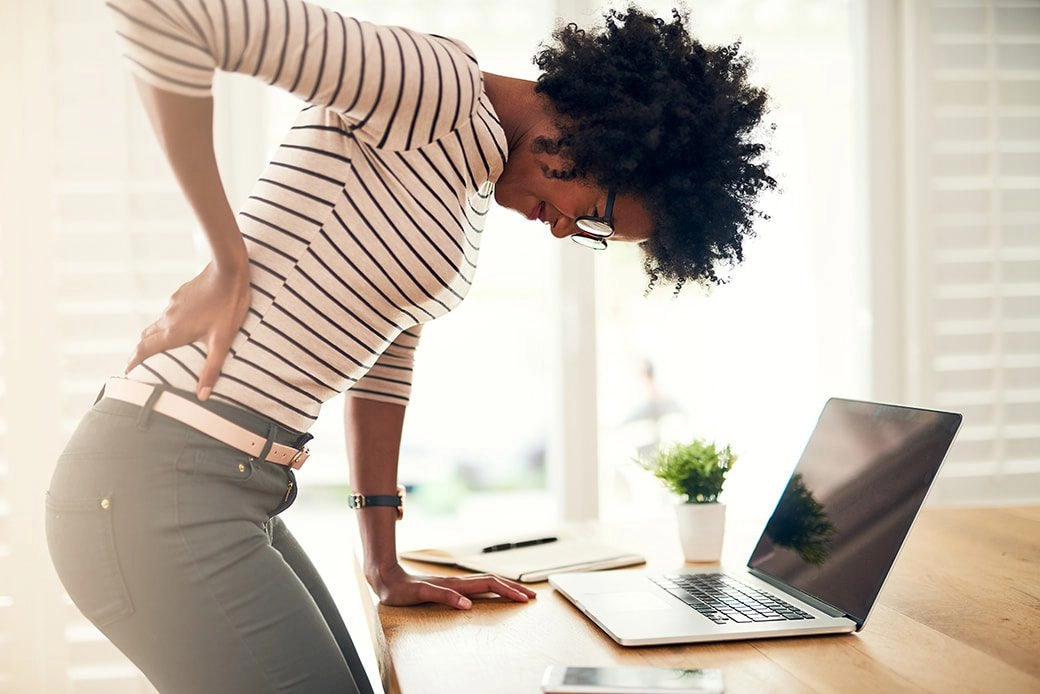
Glad you asked. The answer to this question will depend on how much pain your herniated disc is causing you and how far the disc has herniated into the area surrounding the spine.
No one wants to be in pain, but no one wants surgery. The good news here is that most people don’t need surgery for a herniated disc; they need to know the nine little secrets for getting rid of disc pain.
I know that you want to get rid of your disc pain and get your life back, so let me get right to the point and fill you in on how you can do precisely that.
Here are the nine secrets for getting rid of disc pain and problems naturally:
Secret #1: Give Yourself Time to Heal
Unfortunately, too many people with back pain either don’t allow their bodies time to heal, or they begin a treatment plan, but stop once they begin to feel better.
It takes approximately 4 weeks for a bulging or herniated disc to heal itself, then another 12 weeks of chiropractic care and physical therapy for you to return to your usual daily activities and exercise program.
When you don’t follow through on a treatment plan, or you continue to do things that put more pressure on the affected disc, you not only make things worse, you risk herniating another disc. You also delay the healing process.
You can spend the first 48 hours in bed or on the sofa, icing the affected area. You will most likely feel like sleeping, which is good as this is necessary for healing to take place.
However, after that, you need to begin a treatment plan, which includes getting from your sofa.
Don’t go back to work until your chiropractor tells you that it’s OK. Don’t go back to your old way of doing things, since that is probably what injured your back, to begin with. Lastly, don’t quit treatment the moment you are feeling better.
Allow your body the time it needs to heal from this injury or risk more of the same.
Secret#2: Sit up Straight and Don’t Slouch
How many times did you hear your mother say, “Sit up straight!” or “Don’t slouch, you’ll ruin your back!”? We are betting she said this a hundred times and you know what? Mom really does know best. She was absolutely right.
Believe it or not, bad posture, whether just sitting or standing or lifting, places a huge load on your lumbar spine, which will aggravate a herniated disc.
While bad posture might not actually cause a disc to rupture, it certainly isn’t doing it any favors. The discs in our spines become harder and less flexible as we age. If a disc is already bulging, an incorrect posture will increase the severity of the problem.
If you are unsure about your posture, whether sitting, standing, lifting, or exercising, speak to your chiropractor. They can guide you and advise you on the best methods for improving your posture. Your mom will be proud.
Secret #3: Practice Yoga
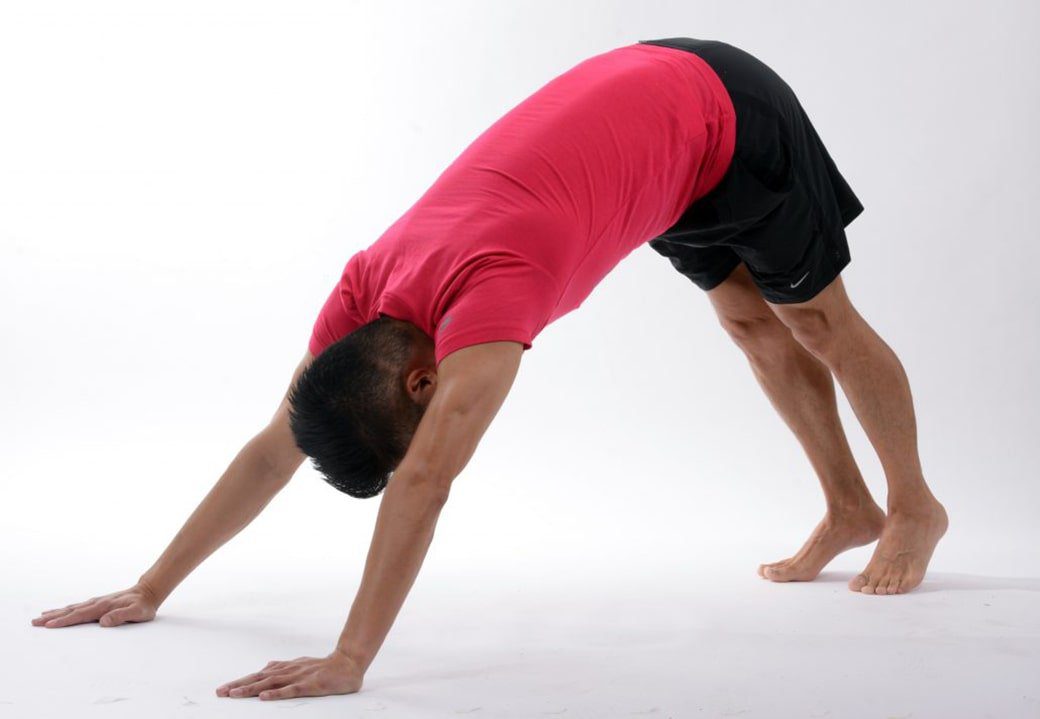
Perhaps one of the best-kept secrets about healing a herniated disc and preventing a reoccurrence is to practice yoga.
While every pose is not going to be suitable for you while you are healing, many of the poses can help shift the weight on the spine, allowing the disc to return to its correct position.
Yoga is a great way to practice better posture, reduce stress and muscle tension, and improve breathing and circulation, while improving core muscles that support the spine. (1)
Don’t attempt yoga poses if you have never done them before. You might injure yourself more. See a yoga teacher and be sure to tell them about your bulging or herniated disc so they can offer you the proper poses for healing and strengthening.
Some of the best yoga poses for those with disc problems are:
- Ardah Uttanasana
- Bharadvajasa (done sitting on a chair, not the floor)
- The Half-Dog Pose
- Corpse Pose
- Mountain Pose
- Warrior II Pose
- Triangle Pose
- Child’s Pose
Secret #4: Make These 10 Healthy Lifestyle Choices

While most people try to eat healthily and get exercise, it doesn’t appear that most of us are doing a very good job of it.
Of course, one of the biggest problems comes from our modern-day lives, where we sit too much, eat too much, and stress out too much.
How to help fix a slipped disc? Want to prevent it from happening again? We will need to make some lifestyle changes.
- Stop smoking
- Don’t drink to excess
- Avoid sitting for long periods of time. Get up and stretch or move around for at least a few minutes for every 30 minutes of sitting
- Eliminate as much stress as possible and learn ways to manage the stress you cannot avoid
- Get plenty of sleep (at least 7-9 hours most nights)
- Lose weight if you need to
- Eat a plant-based, anti-inflammatory diet
- Take anti-inflammatory supplements as directed by your chiropractor
- Get at least 30 minutes of exercise at least 6 days per week
- See your chiropractor regularly for check-ups and advice on posture, lifting, and ergonomics
Secret #5: Sleep in the Proper Position
Each year it seems that we learn something new about how important sleep is. (2) Having a healthy back is no different!
Sleeping in the proper position allows your back to heal and prevents further disc problems by keeping your spine straight. Here are a couple of things you can do to ensure you’re sleeping to prevent disc problems.
- Your posture while sleeping should match your posture while standing up straight with your shoulders back and the natural S-curve in the spine.
- Sleeping on your back or side can help you get rid of disc pain problems.
- If sleeping on your back, make sure your pillow supports your neck but doesn’t tilt it too far up or allow it to sink too far down.
- If you’re a side sleeper, you’ll need a pillow that’s a little thicker to support your head and keep your spine straight.
- Putting a pillow between your legs when you sleep on your side helps to keep your hips and lumbar spine healthy and pain-free.
- Ensure that your mattress is firm enough to support you but soft enough to allow for a comfortable and straight spine, no matter how you sleep.
- If you must sleep on your stomach, put a pillow under your pelvis and another under your forehead to maintain your spine’s S-curve.
Sleeping well can positively affect nearly every aspect of your life, and it works wonders for fixing and preventing disc problems in the back.
Secret #6: Get Chiropractic Care
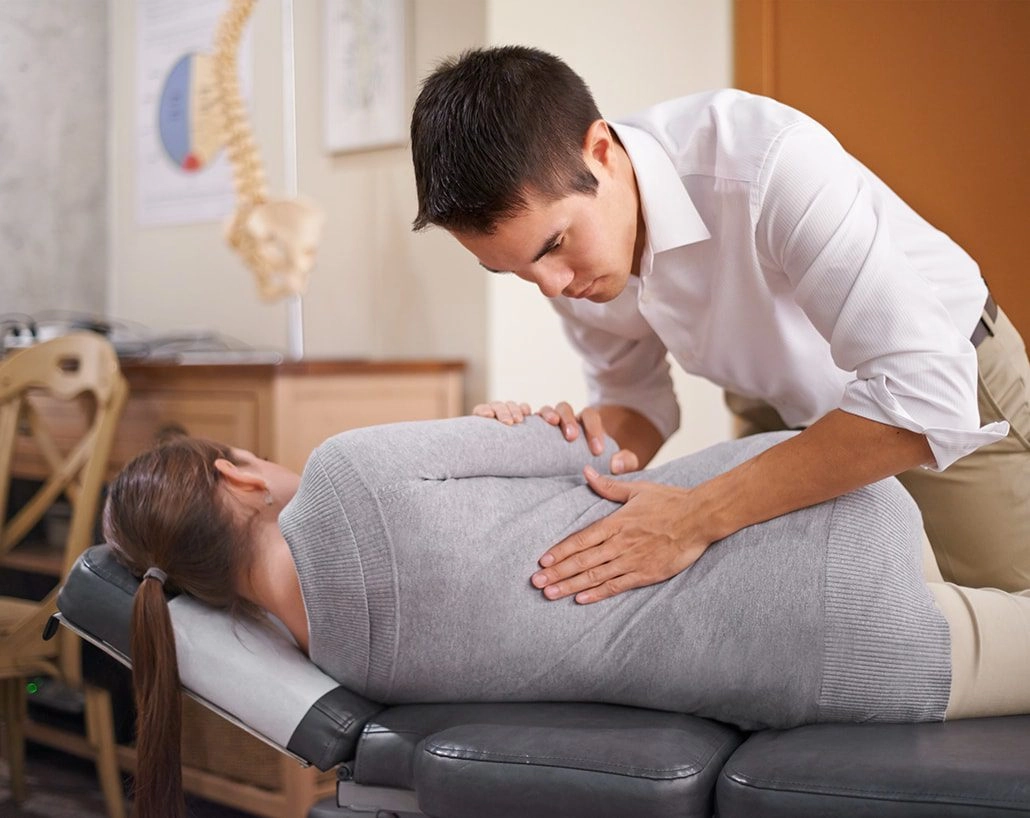
How to heal a bulging disc naturally? With chiropractic care, of course! One of the best ways to stop the pain and heal a bulging disc is to see your chiropractor. Not only can a chiropractor diagnose the root cause and find out if you have a herniated or bulging disc, but they can treat it as well.
After imaging, your chiropractor will set up a treatment plan that is designed for you and your exact needs. Since everyone is different, not everyone will be treated the same way.
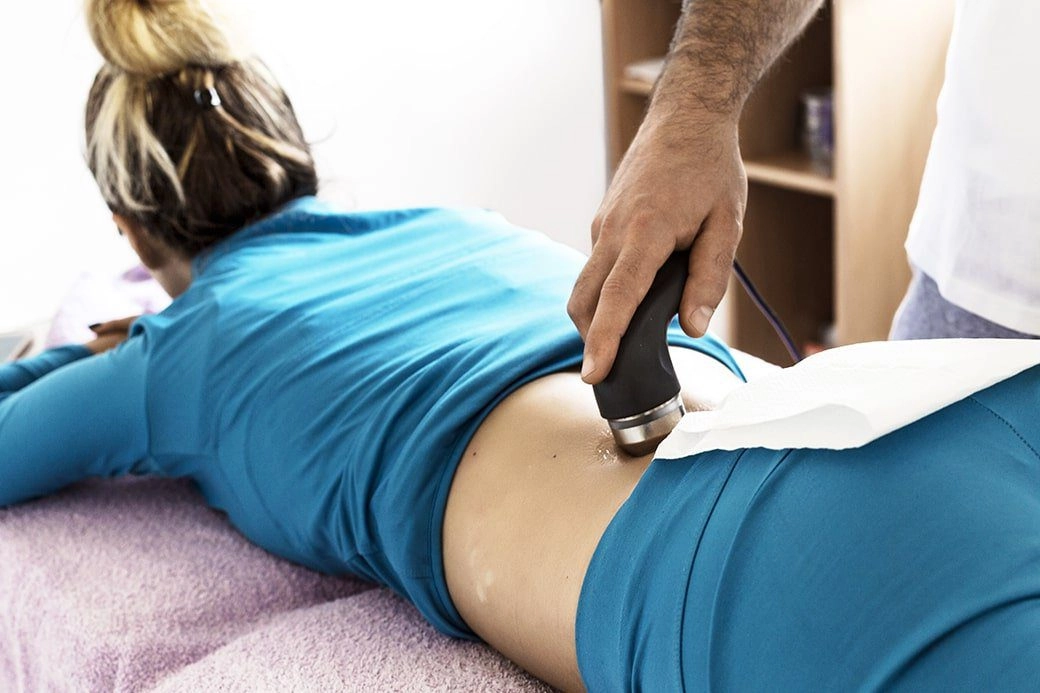
More than likely, your chiropractor will perform a series of spinal adjustments, to realign the vertebrae and discs. This will prevent any further protrusion outside the spine. Then, depending on your needs, your chiropractor might also use other modalities including:
- Ultrasound – This device uses sound waves to create heat that penetrates deep into tissues, relieving muscle spasms and stimulating healing.
- Heat and Ice Therapy – Alternating ice and heat to help reduce swelling and pain, as well as lower inflammation levels.
- Chiropractic Massage (see secret #7)
- Physical Therapy Modalities (see secret #8)
- Cold Laser Therapy – Sometimes called Low-Level Laser Therapy, this uses a very low-light laser to improve circulation, promote rapid healing, and penetrates deep into tissues for added warmth. One meta-analysis of several studies found that those employing cold laser therapy had faster healing of damaged tissues. (3)
- TENS Device – TENS is short for transcutaneous electrical nerve stimulation. This is a small, battery-operated device that delivers a small electrical current to the muscles to relieve pain by overstimulation of the nerves. When nerves are ultra-stimulated, they simply stop sending signals. This device offers hours of pain relief.
- Offer advice on anti-inflammatory supplements
- Offer advice on the ergonomics of your workstation
These are just a few of the things that your chiropractor can offer. You will get the quickest results, not to mention being out of pain much faster, by starting a treatment program with your chiropractor.
What can you do for herniated disc pain? See your local chiropractor sooner, rather than later!
Proven Chiropractic Treatment at Better Health Alaska
Better Health Chiropractic Anchorage use the Alaska Back Pain Protocol method, which involves a three-step treatment plan that has proven itself to be successful for thousands of people with bulging or herniated discs!
While the majority of people with a herniated disc won’t need surgery, there are a few people for whom this will be necessary. Rest assured that if your chiropractor determines that you need treatment outside of the scope of his expertise, he will refer you to a qualified healthcare professional to continue your care.
Picture yourself, vibrant and full of energy, no longer held back by the constant discomfort. That’s the reality thousands have discovered through the Alaska Back Pain Protocol method. Schedule an appointment with the leading chiropractic specialist at 8840 Old Seward Hwy E, Anchorage, Alaska. Have you ever wondered how much better your life could be without the debilitating pain? Why wait another day to find out?
Secret #7: Get a Chiropractic Massage

If you are in pain because of a bulging or herniated disc, a massage might not sound so terrific, but the truth is that a chiropractic massage, which is done under the supervision of your chiropractor, might be just what the doctor ordered, so to speak.
Your chiropractor will direct the massage therapist to problem areas, which areas should be avoided, as well as offer advice as to what type of massage might work best for your condition. Massage will reduce painful muscle spasms while promoting healing through improved circulation.
Studies show that those with chronic low back pain are greatly reduced with regular massage. (4)
Chiropractic massage can go a long way toward reducing pain while stimulating healing. This is a safe and effective treatment that offers substantial pain relief without drugs.
Secret #8: Get Physical Therapy Modalities and Physical Rehabilitation
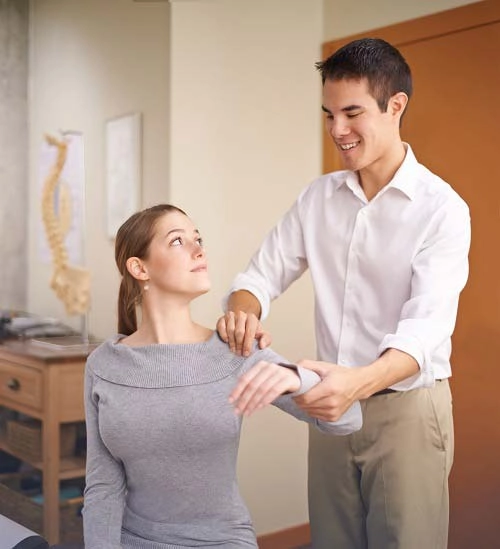
How to heal a herniated disc with exercise? Get some physical therapy modalities when you visit your chiropractor. Discs tend to heal well with mild exercises, such as the type recommended by your therapist. (5) These include walking, standing, and certain types of exercise, but not all types. If you want to know how to heal a herniated disc with exercise, you’ve come to the right place.
Chiropractic and physical therapy-related treatments go hand in hand, which is why you will find most chiropractic offices with physical therapy modalities.
Certain exercises, such as walking, place the load on the back portion of the disc, which pushes the fluid and compounds inside forward. In other words, your physical therapist can show you which exercises will push your bulging disc back into its proper position.
You will need about 4-8 weeks of therapy to allow the disc to heal naturally. Doing the correct exercises and avoiding things like sitting for long periods, will allow the fluid to move away from the nerve and for scar tissues to form over the damaged areas.
Secret #9: Get Acupuncture or Epidurals
Almost no one likes the thought of needles, but for those with chronic health problems that lead to bulging or herniated discs, such as spinal stenosis or degenerative disc disease, epidurals, and acupuncture can be another means of controlling pain.
The majority of people can heal naturally with non-invasive treatments from their chiropractor, but when healing isn’t possible, other methods might need to be employed.
Epidural steroid injections to areas where herniated discs are causing intense pain can not only provide long-lasting pain relief but can also prevent or delay the need for surgery.
Acupuncture uses extremely thin needles to stimulate the body’s own painkillers, as well as promote healing and a sense of well-being.
Speak with your chiropractor about whether either of these options might work for you.

What NOT to Do When You Have a Bulging or Herniated Disc
It’s natural to want to look for ways to relieve pain and prevent a reoccurrence of a herniated or bulging disc, but there are some don’t that you should pay attention to as well, such as:
- DON’T put off a diagnosis or treatment plan. Complications can arise.
- DON’T jump right back into your regular activities when you start to feel better
- DON’T lie in bed all day. You only need about 48-72 hours of rest. After that, you must get up and get moving to prevent doing more damage to your spine
- DON’T lift anything heavier than what your chiropractor recommends (usually 5-10 pounds)
- DON’T do anything that will jerk your spines, such as amusement park rides or dancing
- DON’T wear high heeled shoes
- DON’T sit on very low types of furniture, such as beanbag chairs.
- DON’T do any activity or exercise that causes you to twist your back or do straight leg exercises, such as sit-ups with straight legs.
- DON’T go running until your chiropractor OK’s it. Walking is OK, running or jogging is not.
If this article has been helpful to you, please feel free to share it with others who might also benefit from the information.
If you have low back pain or believe you might have a herniated or bulging disc, or if you have suffered from sciatica, don’t hesitate to request an appointment for a same-day appointment. We will gladly check with your insurance for coverage and will work hard to restore you to a life full of excitement and activity. No one should live in pain. Please call us today.
What Does a Slipped Disc Feel Like?

A slipped disc or herniated disc usually causes immediate, intense pain. Some people describe it as an electric shock, followed by sharp pains in the lower back. Other descriptions include:
- Pain in the lower back and numbness down one leg
- Pain that gets worse if you try to sit or stand or stand up straight
- A sharp pain that gets worse when walking even a short distance
- Low back pain that prevents you from staying in any one position for more than a few minutes
- Muscle weakness in one or both legs
- A burning sensation in the lower back
Can a Bulging Disc Become a Herniated Disc?
Yes. If you ignore the pain of a bulging disc and continue doing the same activities that caused your bulging disc, you will continue to put pressure on that disc, which could rupture and become a herniated disc.
This is a very common occurrence. The risk of causing further damage to your bulging disc is very high if you fail to seek treatment quickly.
Can a Herniated Disc Heal on Its Own?
A herniated disc doesn’t actually heal on its own, but the pain does become less intense and can even go away entirely as the nerve becomes less irritated.
However, it will mean weeks and possibly even months of some fairly intense episodes of pain.
Your own immune response will treat the material that protrudes out of the disc as a foreign object and send an immediate response, usually inflammation, which is very painful. The water from inside the disc will be absorbed by the body and the disc will shrink in size.
Not only is this process lengthy, but it is painful as well. Chances are that you will never recover your full range of movement and your risk of developing another bulging or herniated disc is quite high since you did not take steps to prevent a reoccurrence.
How to Diagnose a Herniated Disc?
Your doctor or chiropractor will need to do a physical exam, followed by some questions about where and when the pain started.
Imaging tests will need to be taken to confirm if you have a bulging disc or a herniated disc. Common imaging could include an MRI, X-rays, or CT scans.
This combination of information will allow your chiropractor or doctor to make a diagnosis about the root cause of your low back pain.
Are There Complications with a Herniated Disc?
Unfortunately, if left untreated, a severely herniated or slipped disc can lead to permanent damage of the nerve. It can cut off the feeling aspect of the nerve, causing you to lose bowel or bladder control.
You could also suffer from a complication called “saddle anesthesia.” This means you would lose feeling in areas where a saddle would touch, such as your inner thighs, the bottom portion of your buttocks, the rectum, and the backs of your thighs.
This is why a diagnosis and treatment plan should begin right away.
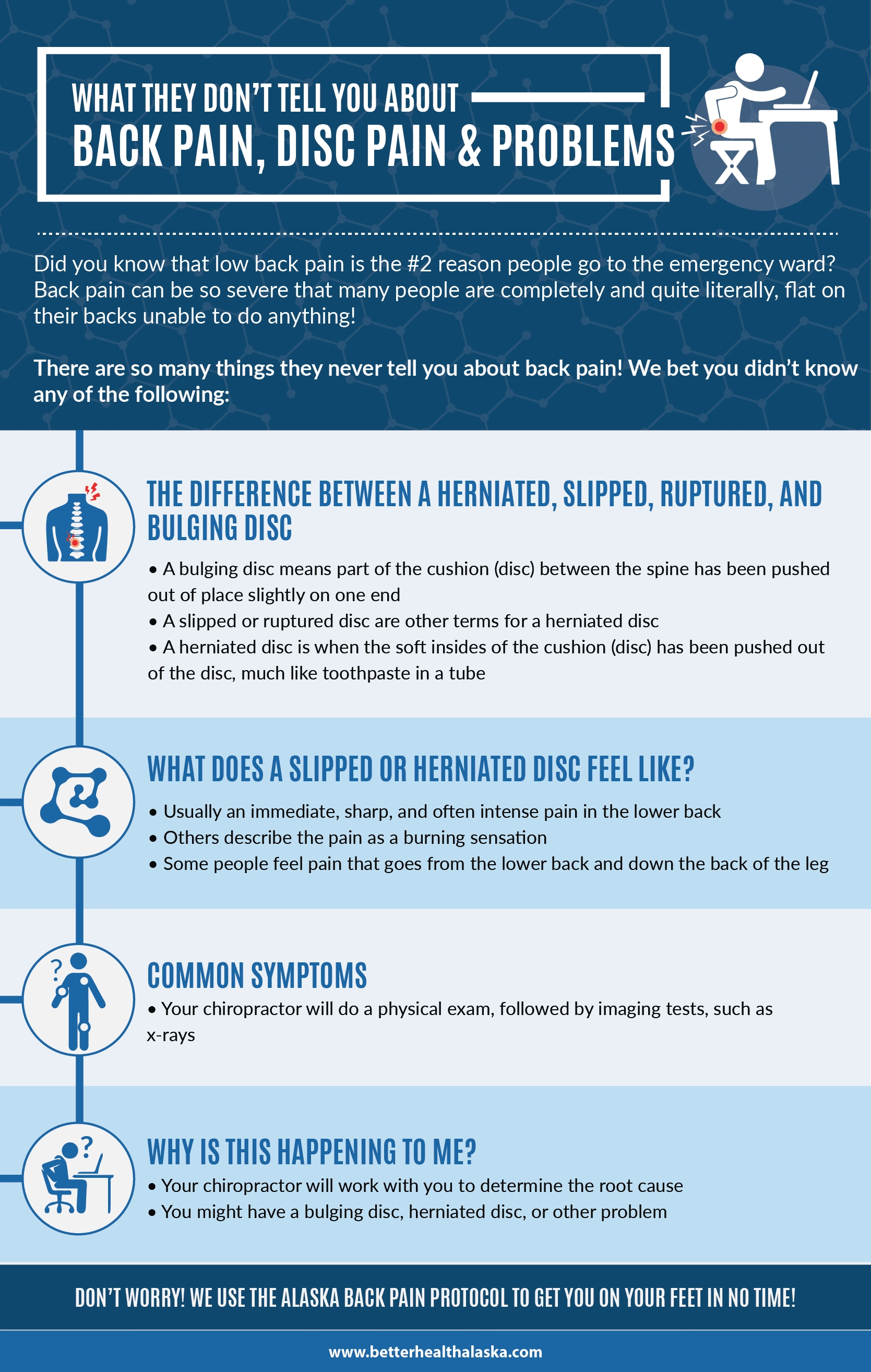
What If I Have Degenerative Disc Disease?
If you suffer from a herniated or bulging disc due to degenerative disc disease, you might be wondering if there is help for you and your problem. How to cure degenerative disc disease naturally? Unfortunately, there is no cure for time and normal use, which is the cause of this disease.
You can, however, use all the secrets below, especially Secret #9, to help you manage your disease, find ways to relieve your pain, and learn how to avoid bulging or herniated discs as much as possible.
Preventing a Recurrence of Herniated Disc
Preventing a recurrence of a herniated disc is an essential part of overall treatment and maintaining quality of life. Maintaining a healthy weight is key, as excess weight can put unnecessary stress on your spine, leading to deterioration of discs. Regular exercise, particularly activities that strengthen the core and improve flexibility, can also help protect your spine. Proper posture, not only when standing or sitting, but also when lifting and carrying items, is fundamental to preventing injuries to your spine. It is important to avoid heavy lifting when possible, but when it is necessary, always lift with your legs and not your back. Make sure to take regular breaks if you sit or stand for long periods, and don’t ignore pain or discomfort; seek medical advice if you experience symptoms. Integrating these habits into your daily life can significantly reduce your risk of experiencing a herniated disc again.
How to Live with a Herniated Disc?
Living with a herniated disc involves managing the symptoms effectively and making lifestyle changes to avoid exacerbating the condition. This primarily includes sticking to a consistent physical therapy regimen designed to strengthen the back muscles and enhance flexibility, which can provide significant pain relief and improve mobility. Pain management may also involve a combination of over-the-counter and prescription medications as recommended by your healthcare provider. Lifestyle changes, such as maintaining a healthy weight, practicing good posture, and avoiding activities that strain the back, are crucial. It’s also important to take regular breaks from sitting or standing for prolonged periods. If you are living with a herniated disc, remember to listen to your body and seek immediate medical attention if your symptoms worsen or if you experience severe pain, numbness, or loss of bowel or bladder control.
Preventive Measures for Bulging Disc
Preventive measures play a crucial role in avoiding the onset of a bulging disc and preventing further deterioration of an existing condition. Regular physical activity, mainly exercises that strengthen the core muscles, can help maintain spinal health by providing better support for the spine. Maintaining a healthy body weight is also essential, as excess weight can strain the spine, increasing the likelihood of disc problems. Habits such as practicing good posture, and being mindful when lifting and carrying heavy objects should be a part of daily routines. Periodic breaks from extended periods of sitting or standing can alleviate pressure on the spine. A balanced diet, rich in nutrients, can contribute to overall health and well-being. Lastly, regular check-ups can help monitor the condition and make necessary adjustments to the treatment plan. Remember, prevention is always better than cure, and these measures can go a long way in maintaining optimal spinal health.
Rehabilitation and Recovery from Herniated Disc
Recovery and rehabilitation from a herniated disc are a gradual and patient-specific process. During this period, it’s critical to follow the treatment plan prescribed by your healthcare provider closely. This usually includes physical therapy exercises to strengthen the back and core muscles and improve flexibility. Over time, these exercises can help reduce the pressure on the herniated disc and alleviate pain. In addition to physical therapy, lifestyle modifications play an important role in the recovery process. This might mean adopting a healthier diet, incorporating regular low-impact exercises into your routine, and practicing good posture, particularly when sitting for extended periods. An integral part of recovery is also learning how to manage pain effectively. This can be achieved through medication, as prescribed by your healthcare provider, or through non-pharmacological methods such as heat or cold therapy, massage, and relaxation techniques. During recovery, it’s important to listen to your body and not rush the process. With patience, consistency, and the right approach, you can successfully navigate the journey to recovery and enhanced quality of life.
Understanding Degenerative Disc Disease and Its Relation to Bulging Disc
Degenerative Disc Disease (DDD) is a condition that often occurs as a part of the natural aging process, where spinal discs start to break down or degenerate. This condition can result in a bulging disc, a situation where the disc shifts from its usual position. Similar to a bulging disc, DDD can cause discomfort to the patient, though the severity and nature of symptoms may vary. Patients may experience localized pain, stiffness, or a tingling sensation in the extremities, depending on the affected area of the spine. In the management of DDD, non-surgical treatments are predominantly employed, such as a combination of physical therapy, maintaining a healthy lifestyle, medication, and alternative therapies like chiropractic treatment or acupuncture. As with bulging discs, patients should ensure proper communication with their healthcare provider to develop a tailored treatment plan that suits their specific state and needs. Furthermore, preventive measures, like daily exercises, practicing good posture, and maintaining a balanced diet, can help manage the symptoms of DDD and prevent further disc degeneration.
Managing Pain Associated with Bulging Disc
One of the most prevalent bulging disc symptoms is pain, which can range from mild to severe and significantly impair an individual’s quality of life. Addressing this pain is crucial, and there are several approaches you can take. Over-the-counter medication like NSAIDs can help reduce inflammation and alleviate pain. Prescription medication, such as muscle relaxants, can also be used if recommended by a healthcare provider. However, medication is not the only solution. Complementary therapies, such as acupuncture and massage, can offer relief by targeting pain points and decreasing muscle tension. Regular exercise, particularly low-impact activities like swimming or walking, can help strengthen the muscles that support the spine, reducing pressure on the bulging disc and mitigating pain. It’s important to note that exercises should be performed under guidance from a trained professional to prevent injury. Finally, maintaining a positive mental attitude can play a significant role in managing pain. Techniques such as mindfulness and deep breathing can help reduce stress and promote relaxation, which, in turn, can alleviate pain. It’s always recommended to consult with a healthcare provider to develop a comprehensive pain management plan that addresses your individual needs and circumstances.
Preventing the Progression of Degenerative Disc Disease
While Degenerative Disc Disease (DDD) is often a part of the natural aging process, certain lifestyle choices can assist in slowing its progression and minimizing its impacts. Regular physical activity, mainly exercises that strengthen the back and abdominal muscles, can support the spine, improve posture, and reduce pressure on the discs.
Maintaining a healthy weight is essential, as excess weight can place additional stress on the discs in your spine, accelerating the degeneration process. A diet rich in anti-inflammatory foods such as fruits, vegetables, lean proteins, and omega-3 fatty acids can help manage inflammation associated with DDD.
Proper ergonomics at work and home, like using a chair with good lumbar support and keeping computer monitors at eye level, can reduce strain on your neck and spine. Regular check-ups with your healthcare provider can help detect any early signs of disc degeneration, allowing for timely intervention.
Avoiding tobacco and limiting alcohol intake is also advised as both can contribute to disc dehydration and further degeneration. Practicing mindfulness and stress management techniques can help in managing the emotional impacts of DDD, as chronic stress can amplify the perception of pain.
Remember, preventative measures and early intervention are key in managing the progression and impact of degenerative disc disease. Always consult with your healthcare provider for personalized advice based on your specific situation and needs.
Managing Day-to-Day Activities with Degenerative Disc Disease
Living with Degenerative Disc Disease (DDD) often means adapting to a new set of physical limitations and learning how to manage daily activities without exacerbating symptoms. It’s key to find a balance between maintaining an active lifestyle and avoiding activities that can cause or worsen pain.
Modifying your exercise routine may be necessary. Low-impact activities like swimming or cycling can provide the benefits of exercise without putting undue stress on your spine. Additionally, incorporating stretching and strength-building exercises can improve flexibility and support spinal health.
Ergonomics play a huge role in managing DDD. Consider ergonomic chairs and adjustable desks for work or home use. These designs can help maintain good posture, reducing the strain on your spine.
Remember, it’s important to take frequent breaks to move around if you’re sitting or standing for long periods. And when lifting heavy objects, always bend at the knees and lift with your legs, rather than your back, to prevent injury.
When it comes to sleep, a good-quality mattress and pillow can help ensure the spine maintains a neutral position, mitigating any discomfort or pain that might be experienced with DDD.
Careful management of day-to-day activities can significantly improve quality of life when living with degenerative disc disease. Always consult with your healthcare provider for personalized advice and strategies based on your specific situation and needs.
A Word on Surgical Options for Bulging Disc, Herniated Disc, and Degenerative Disc Disease
While surgery for Bulging Disc, Herniated Disc, and Degenerative Disc Disease is available, it’s essential to stress that these surgical treatments are not a panacea. Options such as microdiscectomy for a bulging disc, discectomy or laminectomy for a herniated disc, and disc replacement or spinal fusion for Degenerative Disc Disease, are typically considered as last resort solutions. These invasive procedures come with their own set of risks, including infection, nerve damage, and the possibility that they may not fully alleviate the pain or discomfort.
Remember, surgical intervention is not the first line of treatment and should not be sought out prematurely. The first and foremost approach should always be nonsurgical treatments including physical therapy, pain management techniques, lifestyle modifications, and medication. These methods often come with fewer risks and have shown significant efficiency in managing these conditions. Always consult with your healthcare provider in order to make an informed decision based on your specific condition and needs.
